
Article
Art of England Magazine, April 2010
DYNAMIC REALISM - The Art of Abbey Walmsley
by Sophie Sharp
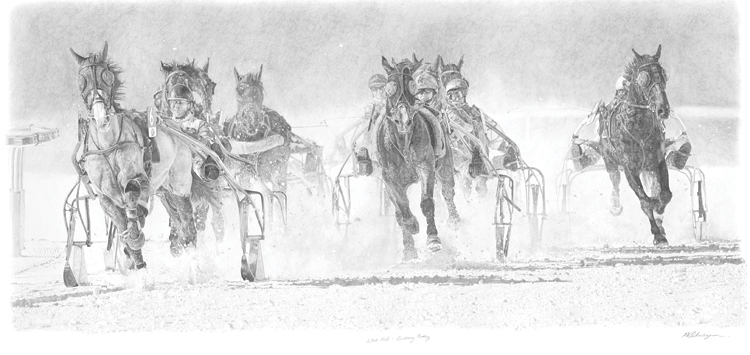
The exhibition: 'Dynamic Realism - The Art of Abbey Walmsley' will showcase the largest collection of Abbey Walmsley's works exhibited to the general public, bringing the realist genre of Dynamic Realism to a broader group of discerning collectors. The exhibition will bring a fresh approach to buying and commissioning meticulously crafted works of art, combining both clients art collecting ambitions and philanthropic desires.
At 24 Abbey Walmsley was already recognised as a contemporary master painter as her works hung alongside Picasso, Rembrandt, Warhol, Harris, Hunt and others during the 'Art of Living' exhibition housed throughout Harrods, London in 2003. The exhibition catalogue described Abbey Walmsley as one of the 'best realist painters in the world' ('Art of Living' Sept 2003, Halcyon Gallery) Last time Abbey Walmsley was featured in The Art of England in November 2005 she was about to attend two solo exhibitions in both Dallas and Houston, Texas USA. Now we catch up with her before she embarks on a major solo exhibition in the heart of Mayfair, London.
Can you explain what Dynamic Realism is and why it is different from other genres of realism?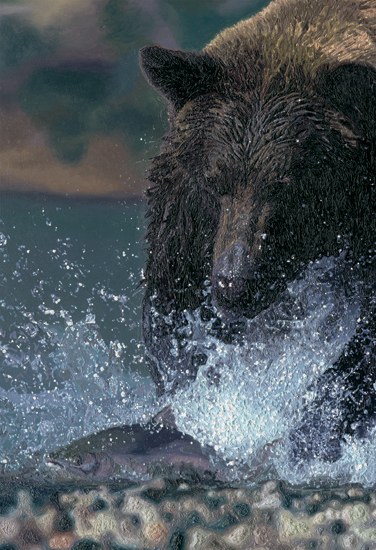
Combining Realism and Illusionism is not new. However, being able to bring movement 'alive' within a work that also conveys a three-dimensional method of painting arguably is. A work of Dynamic Realism contains six key attributes. It is these attributes used in combination with each other that has moved conventional realism into new territory. The key attributes are: accuracy, colour, light / tone, psychology of the subject(s), movement or time perspective and thickness of paint / three-dimension. Dynamic Realism is the result of trying to get beyond the commonly portrayed mathematically based illusion of space (perspective). Perspective brings forth a whole new level of complexity when trying to portray an accurate moment of time, in conjunction with a painting technique that is always exploring boundaries of thickness, texture and accuracy.
Does Dynamic Realism only cover wildlife and equestrian related subjects?
No, I aim to use Dynamic Realism to preserve many cultural, environmental and historical subjects. What is important is that the subjects chosen can utilise my technique in either oil paint or pencil. Dynamic Realism works when there are two or more component parts, even if only one component is visible to the viewer. The subject must be reacting to or with something, and carry a level of energy or force that has the ability to captivate the viewer.
What was the driving force behind the development of your technique?
Dynamic Realism has been a product of asking questions: Is there a higher level of accomplishment that has yet to be achieved in the genre of realism? Is there a realist technique that reaches beyond ‘Renaissance Classicism’? A method of realist painting that is not lessened or duplicated by photographic or digital technologies, that provides a renewed sense of uniqueness and desired value in the modern market? Questions like these have driven over 10,000hours of exploration of myself as an artist both technically and mentally, and many years of assessing the market and listening to clients.
Another key driver to the development of Dynamic Realism was the decision to pull away from the detrimental pressures placed on artists from high-end galleries, and a desire to put the clients first, providing them with a higher level of personal service and the highest quality of art possible.
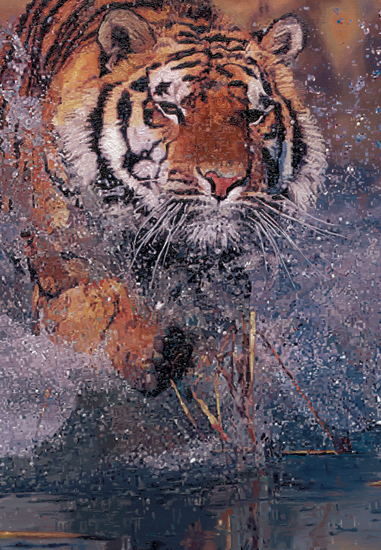
You say that a relationship with a high-end gallery can be detrimental to artistic quality and development, and this impacts both collectors and artists negatively, can you explain this?
The approach galleries take with their artists is much the same whichever genre of art the artist chooses to practice. It is an approach of driving the artist to produce as much work as possible as opposed to taking the time necessary to maintain the quality of each piece. Under this model, the more the art sells, the more the gallery pushes the artist, who has to cut corners to produce faster. With gallery's often taking up to a 70% commission on each piece, the artist often acquiesces to this pressure for volume over quality so as to make a reasonable return on their work. This "Faustian Bargain" maybe fine if the genre of art is quick to produce and its quality is not so easy to judge (being relative only to the trend of the market / artist). However, with the time required to produce quality realist works, this model does not work for either the patron or the artist. I am not saying that galleries do not have an important role in the recognition, development and nurturing of artistic talent. Indeed, many genres are reliant on galleries to ensure the cogs in the market go round.
However with some genres, in particular the genre of realism, this approach leaves the collectors at a distinct disadvantage. Realism in general, if done well, takes time to produce. If realist artworks are in high demand from the gallery, the artist has no choice but to produce at a faster production rate and the quality of the work becomes poorer. The faster the work sells, the higher the price commanded by the gallery from collectors, the artist struggles to produce quality works and is unmotivated to do so by the high commission taken by the gallery. This becomes a vicious circle for both realist collectors and artists, where there is no opportunity for development in terms of quality; the market is overrun with poorly executed realist works whose market/investment value goes down.
What inspires clients to collect Dynamic Realism?
Often when clients see the quality of a piece of already produced Dynamic Realism, they are excited and engaged by the image portrayed and how it has been produced. Clients know that because the works take many hundreds of hours to create, production quantities are low (on average 5-7 works a year are produced) and they desire to own their own exclusive piece. Collectors who commission work(s) see the opportunity to have an exceptionally dramatic bespoke piece of art crafted to their specific vision. Clients become more engaged when they are encouraged to understand what can be achieved using the attributes of Dynamic Realism, and how their vision(s) can become ‘alive’. Clients enjoy the opportunity of working with me and are reassured by the high level and clarity of communication, the fair value put on the art and a sense of maximised return on investment. Collectors, when commissioning or buying works showcased at the exhibition, will not only be investing in a piece of timeless art, but they will have the opportunity to see 25% percent of there purchase go towards philanthropic causes largely determined by the collectors themselves.
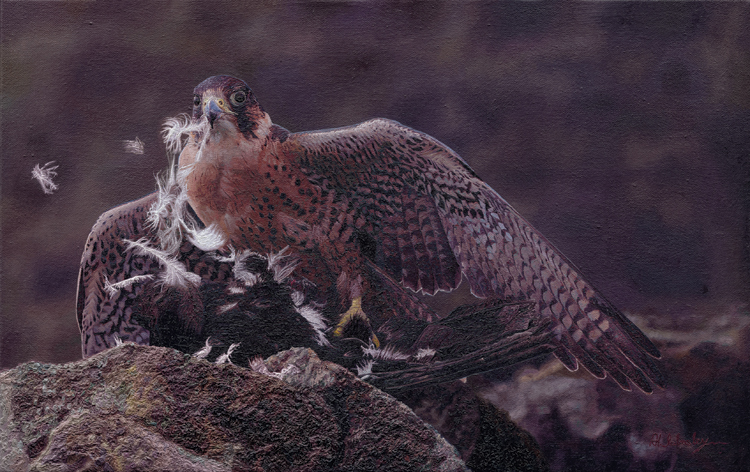
Where will your next research trip take you, and what will you be focussing on?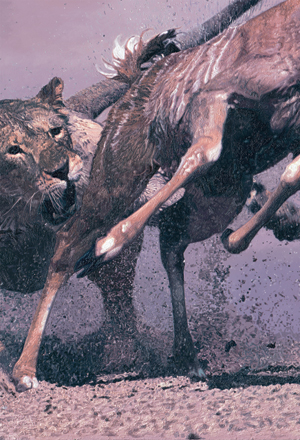
I will be travelling out to Cyprus and Jordan this February. I will be working with the Jordan Living History Association and the Roman Army and Chariot Experience team in the hippodrome in Jerash, with the aim of understanding and archiving chariot racing. I will also have the pleasure of working with Mr Said Huneidi owner of The Royal Institute of Arabian Horsemanship, that will allow me to gain insight into the art of Furussiya, cavalry skills used by the Mamluks (13th– 16th c.). I will also be hoping to track down some Arabian Oryx with the help of The Royal Society for the Conservation of Nature. I hope that from this trip I can successfully bring the Jordanian culture 'alive' using Dynamic Realism.
What can people expect when visiting the exhibition?
The exhibition is split over two floors and will showcase 12 original artworks and 5 exclusive Artist Proof Archival Quality Prints. Further details will be available on commissionable projects and there will be an opportunity to meet and discuss the artworks with me. The Private view evening will feature guest speaker and collector David Lesperance. Signed Catalogues will be available during the duration of the exhibition.
Exhibition dates and location: 15th - 20th March, Gallery 27 Cork St, Mayfair, London
Exhibition Opening hours - Monday - Friday 10am - 6pm, Saturday 10am - 4pm
Catalogues are available during the exhibition and online from www.AbbeyWalmsley.com
For Another Press Interview (2013) for Horse-Tales Magazine click here: http://horse-tales.com/2013/05/20/a-sureness-of-character-grace-power/
